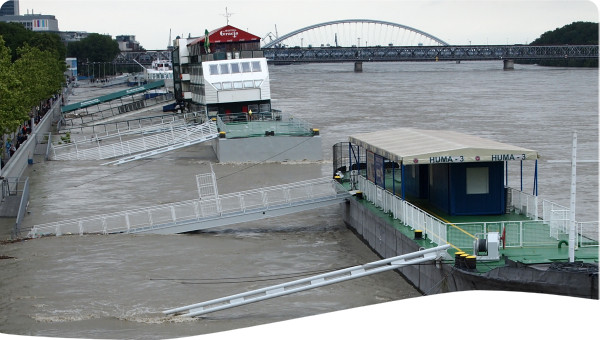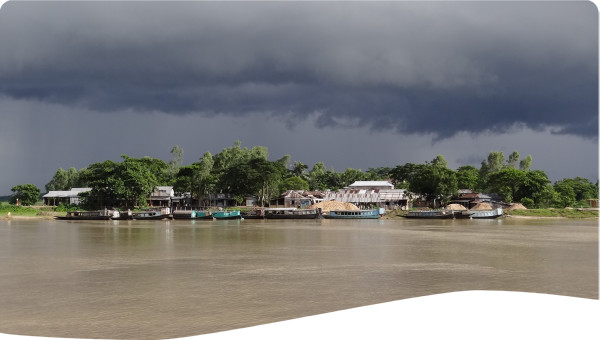The management of water resources in Bangladesh involves a centralised, heavy engineering approach in order to control floods and install irrigation, however, there is now a pressing need for ensuring social justice and equity in water resource development. Recognising the role of water in poverty alleviation, action has been taken to implement a 25-year National Water Management Plan.
Water resource development in Bangladesh has been an important area of focus since the 1950s, but given the growing conflict around the allocation of water to competing demands, as well as growing water stress from changing climatic conditions, there is now a pressing need for ensuring social justice and equity in water resource development. In Bangladesh, equitable and sustainable water management is critically important due to the country’s geographical location, low-lying topography and high incidence of poverty.
A large proportion of the rural poor are dependent on natural water bodies in floodplains and in hilly watersheds for their livelihood. Their subsistence is based on food production, fishing, harvesting wetland plants, plying country boats and other activities which depend on healthy aquatic ecosystems.
The management of water resources in Bangladesh involves a centralized, heavy engineering approach in order to control floods and install irrigation. The other uses of water, such as domestic use and sanitation, fisheries, navigation, ecology and biodiversity, tend to be overlooked, undermining the lives and livelihoods of the rural poor and ecosystem health.
However, the construction of irrigation canals and the intensive use of water for irrigation have led rivers, canals and wetlands to dry up, thereby denying opportunities for subsistence food production to the landless people and small and marginal farmers.
Normal annual flooding provides numerous benefits such as common access to the large natural floodplain fishery, deposition of fertile loam on agricultural fields, and flushing of stagnant water in low-lying areas. However, disrupting this normal process through heavily-engineered flood control structures has many consequences, such as increasing flood levels in adjacent areas.
Flood control projects involve acquiring substantial land for embankment construction. Land acquisition causes immense economic and social suffering to the poor households who lose their land especially small agricultural landholders who lose their land, and households who lose their homestead land.
Following independence in 1971, the East Pakistan Water and Power Development Board Authority was restructured and responsibilities for planning and management of water resources were handed over to the newly created Bangladesh Water Development Board (BWDB). The BWDB became the national focal point for water management and undertook many projects to control floods and build drainages for irrigation.
The 1999 National Water Policy (NWP) for the first time recognized the role of water in poverty alleviation and called for inclusive water management which took into consideration the national goal of poverty alleviation, amongst others .The policy was revised in 2000 and approved by the government and its goal was to ensure progress towards fulfilling national goals of economic development, poverty alleviation, food security, public health and safety, a decent standard of living for the people and protection of the natural environment.
To facilitate the implementation of the NWP, the government approved a 25-year National Water Management Plan in 2004. The main elements of the plan include the multi-use approach to water (not just flood protection but also irrigation, drinking water, sanitation and other uses) and an emphasis on ‘soft’ approaches, such as better management of water resources, instead of just hard engineering approaches.
The Bangladesh's national water management plan outlines a broad framework for preserving the environment and promoting equity in water management which will help to increase the social dimension in the country’s approach to water management. Despite all these steps that have been taken, there are still numerous things that need to be further addressed to achieve equity and social justice in water sharing and allocation of water resource management. In order to make the most equitable decision, one has to consider and evaluate the interventions on the basis of their hydraulic, environmental, ecological and socio-economic consequences. Hence for water management to be equitable, planning needs to encompass the following:
- Ensure multi-objective planning
- Form water and ecosystem-based local management zones
- Ensure public participation.
The focus of water resource development in Bangladesh is still very much biased towards flood control, drainage and irrigation which has limited inputs from local people and often ignores water use on subsistence of poor people are based.
Construction of big irrigation canals establishes relatively large farmers’ property rights over water. Small and marginal farmers, who use natural water bodies to irrigate their farms using traditional methods, consequently face difficulties that often affect their livelihoods.
Most of the flood control and water conservation projects benefit the richer sections of society by creating opportunities for culture fisheries or fish farming, but the poor do not have enough capital to invest in culture fisheries.
 Case studies
Case studies


